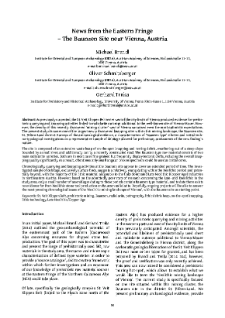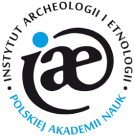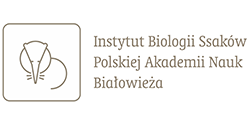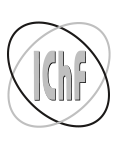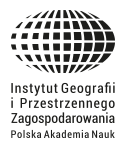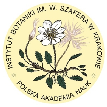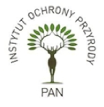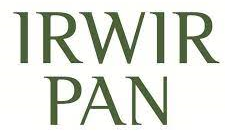- Wyszukaj w całym Repozytorium
- Piśmiennictwo i mapy
- Archeologia
- Baza Młynów
- Nauki przyrodnicze
Wyszukiwanie zaawansowane
Wyszukiwanie zaawansowane
Wyszukiwanie zaawansowane
Wyszukiwanie zaawansowane
Wyszukiwanie zaawansowane

Obiekt
Tytuł: News from the Eastern Fringe – The Baunzen Site near Vienna, Austria
Twórca:
Brandl, Michael : Tł. ; Schmitsberger, Oliver ; Trnka, Gerhard
Data wydania/powstania:
Typ zasobu:
Inny tytuł:
Between History and Archaeology : papers in honour of Jacek Lech
Współtwórca:
Wydawca:
Miejsce wydania:
Opis:
Typ obiektu:
Abstrakt:
As previously suspected, the St. Veit Klippen Belt series west of the city limits of Vienna produced evidence for prehistoric quarrying and knapping activities linked to radiolarite outcrops additional to the well-known site of Vienna Mauer. However, the density of this recently discovered ‘mining cluster’ west of Vienna surpassed even the most optimistic expectations. The present study discusses one of the largest newly discovered knapping sites within this mining landscape, the Baunzen site, St. Pölten-Land district. Surveys of the archaeological evidence, a characterization of ‘Baunzen type’ silicites and initial techno-typological investigations on a representative sample of debitage allowed for preliminary assessments of the new finding`s nature. The site is composed of an extensive waste heap of on-the-spot knapping and testing debris, weathering out of a steep slope bounded by a small river, and additionally cut by a recently constructed road. The Baunzen type raw material consists of two main radiolarite varieties. Both are in most cases fine grained but frequently display tectonic clefts, reducing the overall knapping quality significantly. As a result, oftentimes only small angular broken specimens could be used as initial cores.Chronologically, quarrying and knapping activities at the Baunzen site appear to cover an extended period of time. The investigated sample of debitage, exclusively surface finds, suggests a relatively young dating within the Neolithic period and potentially beyond, with the majority of the lithic material assignable to the flake dominated Late Neolithic (Copper Age) industries in northeastern Austria. However, based on the admittedly poor state of research concerning the Late- and Eneolithic in the study area, only a small number of assemblages dating to those periods contain Baunzen type material, and to date there exists no evidence for Post-Neolithic stone tool production on Baunzen radiolarite. Hopefully, ongoing projects will be able to answer the most pressing chronological issues of the ‘Neolithic mining landscape of Vienna’, with the Baunzen site as starting point
Bibliografia:
Binsteiner, A. 1990. Das neolithische Feuersteinbergwerk von Arnhofen, Ldkr. Kelheim, Bayerische Vorgeschichtsblätter 55, 1–56
Brandl, M. and Trnka, G. 2014. The Eastern Fringe: Lithic Raw Materials from the Eastern most Alps in Austria. In D. Piotrowska, W. Piotrowski, K. Kaptur and A. Jedynak (eds), Górnictwo z epoki kamienia: Krzemionki – Polska - Europa. W 90. Rocznicę odkrycia kopalni w Krzemionkach [Stone Age mining: Krzemionki – Poland – Europe. On the 90. anniversary of Krzemionki mine discovery], Ostrowiec Świętokrzyski, Muzeum Historyczno- Archeologiczne w Ostrowcu Świętokrzyskim [Historical and Archaeological Museum in Ostrowiec Świętokrzyski], Silex et Ferrum Vol. 1, 335– 359
Brandl, M., Hauzenberger, C., Postl, W., Martinez, M.M., Filzmoser, P., and Trnka, G. 2014. Radiolarite studies at Krems-Wachtberg (Lower Austria): Northern Alpine versus Carpathian lithic resources, Quaternary International 351, 146–162
BSI 2009. BSI British Standards. Code of practice for earthworks, BS 6031, 2009
Dunham, R.J. 1962. Classification of carbonate rocks according to depositional texture. In W.E. Ham (ed.), Classification of carbonate rocks,Tulsa, American Association of Petroleum Geologists Memoir 1, 108–121
Embry, A.F. III and Klovan, J.S. 1971. A Late Devonian reef tract on northeastern Banks Island. N.W.T., Bulletin of Canadian Petroleum Geology 4, 730–781
Geological Society of America (GSA) 2009. Geological Rock Color Chart with genuine Munsell color chips
Janoschek, R., Küpper, H. and Zirkl, E.J. 1954. Beiträge zur Geologie des Klippenbereiches bei Wien, Mitteilungen der Geologischen Gesellschaft 47, 235–308
Oliva, M. 2010. Pravěké hornictví v Krumlovském lese. Vznik a vývoj industriálně-sakrální krajiny najižní Moravě [Prehistoric mining in the ‘Krumlovský les‘ (southern Moravia). Origin and developement of an industrial-sacred landscape], Brno, Moravské Zemské Muzeum, Anthropos 32 (N.S. 24)
Oliva, M. 2014. Krumlovský les (jižní Morava) na konci eneolitu [The ‘Krumlovský les’ (Southern Moravia) at the end of the Neolithic]. In D. Piotrowska, W. Piotrowski, K. Kaptur and A. Jedynak (eds), Górnictwo z epoki kamienia: Krzemionki – Polska – Europa. W 90. Rocznicę odkrycia kopalni w Krzemionkach [Stone Age mining: Krzemionki – Poland – Europe. On the 90. anniversary of Krzemionki mine discovery], Ostrowiec Świętokrzyski, Muzeum Historyczno-Archeologiczne w Ostrowcu Świętokrzyskim [Historical and Archaeological Museum in Ostrowiec Świętokrzyski], Silex et Ferrum Vol. 1, 291– 318
Penz, M. 2007. Die Bedeutung des Gemeindeberges in Wien 13, Ober St. Veit als jungsteinzeitlicher Siedlungsplatz, Fundort Wien 10, 194–197
Penz, M. and Schmitsberger, O. 2016. Eine neu entdeckte (neolithische?) Hornsteinhalde im Lainzer Tiergarten – Inzersdorfer Wald, Fundort Wien 19, in Press
Prey, S. 1979. Der Bau der Hauptklippenzone und der Kahlenberger Decke im RaumePurkersdorf- Wienerwaldsee (Wienerwald), Verhandlungen der Geologischen Bundesanstalt, Wien 2, 205–228
Prey, S. 1991. Zur tektonischen Position der Klippe der Antonshöhe bei Mauer – Eine Richtigstellung, Jahrbuch der Geologischen Bundesanstalt Wien 134, 845-847
Prey, S. 1993. Die Flyschzone des Wienerwaldes. In B. Plöchinger and S. Prey (eds), Der Wienerwald, Sammlung Geologischer Führer 59, Berlin – Stuttgart, Borntraeger, 1–57
Trnka, G. 2014. The Neolithic radiolarite mining site of Wien – Mauer Antonshöhe (Austria). In: K.T. Biró, A. Markó and K.P. Bajnok (eds), Aeolian Scripts. New Ideas on the Lithic World. Studies in Honour of Viola T. Dobosi, Budapest, Magyar Nemzeti Múzeum, Inventaria Praehistorica Hungarie 13– , 235–245
Volkman, J.K. and Tanoue, E. 2002. Chemical and biological studies of particulate organic matter in the ocean, Journal of Oceanography 58, 265–279
Wessely, G. 2006. Geologie der österreichischen Bundesländer – Niederösterreich, Wien, Geologische Bundesanstalt
Strona pocz.:
Strona końc.:
Szczegółowy typ zasobu:
Identyfikator zasobu:
Język:
Prawa:
Licencja Creative Commons Uznanie autorstwa-Na tych samych warunkach 3.0 Polska
Zasady wykorzystania:
Zasób chroniony prawem autorskim. [CC BY-SA 3.0 PL] Korzystanie dozwolone zgodnie z licencją Creative Commons Uznanie autorstwa-Na tych samych warunkach 3.0 Polska, której pełne postanowienia dostępne są pod adresem: ; -
Digitalizacja:
Instytut Archeologii i Etnologii Polskiej Akademii Nauk
Lokalizacja oryginału:
Biblioteka Instytutu Archeologii i Etnologii PAN
Dofinansowane ze środków:
Program Operacyjny Polska Cyfrowa, lata 2014-2020, Działanie 2.3 : Cyfrowa dostępność i użyteczność sektora publicznego; środki z Europejskiego Funduszu Rozwoju Regionalnego oraz współfinansowania krajowego z budżetu państwa ; Unia Europejska. Europejski Fundusz Rozwoju Regionalnego
Dostęp:
Kolekcje, do których przypisany jest obiekt:
- Repozytorium Cyfrowe Instytutów Naukowych > Kolekcje Partnerów > Instytut Archeologii i Etnologii PAN > Zbiory Biblioteki IAE PAN
- Repozytorium Cyfrowe Instytutów Naukowych > Piśmiennictwo > Książki/Rozdziały
- Repozytorium Cyfrowe Instytutów Naukowych > Kolekcje Partnerów > Instytut Archeologii i Etnologii PAN > Zbiory Biblioteki IAE PAN > Książki
Data ostatniej modyfikacji:
2 paź 2020
Data dodania obiektu:
30 cze 2020
Liczba pobrań / odtworzeń:
343
Wszystkie dostępne wersje tego obiektu:
https://rcin.org.pl./publication/99633
Wyświetl opis w formacie RDF:
Wyświetl opis w formacie RDFa:
Wyświetl opis w formacie OAI-PMH:
| Nazwa wydania | Data |
|---|---|
| Brandl, Michael, 2018, News from the Eastern Fringe – The Baunzen Site near Vienna, Austria | 2 paź 2020 |
Obiekty Podobne
Faragó, Norbert Péter, Réka Katalin Viktorik, Orsolya Máté, László Mester, Zsolt
Pyżewicz, Katarzyna Przeździecki, Michał Grużdź, Witold Kozak, Bartosz Płaza, Dominik Kacper Sobko, Beata
Tarriño, Antonio Elorrieta, Irantzu Alonso-Herrero, Diego López-Tascón, Cristina Hernández-Hernández, Hugo Castañeda, Nuria Larreina, David Aguirre, Mikel Mujika, José Antonio
Trela-Kieferling, Elżbieta Stefański, Damian
Rauba-Bukowska, Anna Zastawny, Albert
Szilasi, Attilla Botond
Grużdź, Witold Pyżewicz, Katarzyna
Jakubczak, Michał Budziszewski, Janusz Leloch, Michał Gryczewska, Natalia Szeliga, Marcin Kot, Małgorzata

 INSTYTUT ARCHEOLOGII I ETNOLOGII POLSKIEJ AKADEMII NAUK
INSTYTUT ARCHEOLOGII I ETNOLOGII POLSKIEJ AKADEMII NAUK
 INSTYTUT BADAŃ LITERACKICH POLSKIEJ AKADEMII NAUK
INSTYTUT BADAŃ LITERACKICH POLSKIEJ AKADEMII NAUK
 INSTYTUT BADAWCZY LEŚNICTWA
INSTYTUT BADAWCZY LEŚNICTWA
 INSTYTUT BIOLOGII DOŚWIADCZALNEJ IM. MARCELEGO NENCKIEGO POLSKIEJ AKADEMII NAUK
INSTYTUT BIOLOGII DOŚWIADCZALNEJ IM. MARCELEGO NENCKIEGO POLSKIEJ AKADEMII NAUK
 INSTYTUT BIOLOGII SSAKÓW POLSKIEJ AKADEMII NAUK
INSTYTUT BIOLOGII SSAKÓW POLSKIEJ AKADEMII NAUK
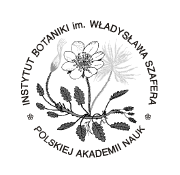 INSTYTUT CHEMII FIZYCZNEJ PAN
INSTYTUT CHEMII FIZYCZNEJ PAN
 INSTYTUT CHEMII ORGANICZNEJ PAN
INSTYTUT CHEMII ORGANICZNEJ PAN
 INSTYTUT FILOZOFII I SOCJOLOGII PAN
INSTYTUT FILOZOFII I SOCJOLOGII PAN
 INSTYTUT GEOGRAFII I PRZESTRZENNEGO ZAGOSPODAROWANIA PAN
INSTYTUT GEOGRAFII I PRZESTRZENNEGO ZAGOSPODAROWANIA PAN
 INSTYTUT HISTORII im. TADEUSZA MANTEUFFLA POLSKIEJ AKADEMII NAUK
INSTYTUT HISTORII im. TADEUSZA MANTEUFFLA POLSKIEJ AKADEMII NAUK
 INSTYTUT JĘZYKA POLSKIEGO POLSKIEJ AKADEMII NAUK
INSTYTUT JĘZYKA POLSKIEGO POLSKIEJ AKADEMII NAUK
 INSTYTUT MATEMATYCZNY PAN
INSTYTUT MATEMATYCZNY PAN
 INSTYTUT MEDYCYNY DOŚWIADCZALNEJ I KLINICZNEJ IM.MIROSŁAWA MOSSAKOWSKIEGO POLSKIEJ AKADEMII NAUK
INSTYTUT MEDYCYNY DOŚWIADCZALNEJ I KLINICZNEJ IM.MIROSŁAWA MOSSAKOWSKIEGO POLSKIEJ AKADEMII NAUK
 INSTYTUT PODSTAWOWYCH PROBLEMÓW TECHNIKI PAN
INSTYTUT PODSTAWOWYCH PROBLEMÓW TECHNIKI PAN
 INSTYTUT SLAWISTYKI PAN
INSTYTUT SLAWISTYKI PAN
 SIEĆ BADAWCZA ŁUKASIEWICZ - INSTYTUT TECHNOLOGII MATERIAŁÓW ELEKTRONICZNYCH
SIEĆ BADAWCZA ŁUKASIEWICZ - INSTYTUT TECHNOLOGII MATERIAŁÓW ELEKTRONICZNYCH
 MUZEUM I INSTYTUT ZOOLOGII POLSKIEJ AKADEMII NAUK
MUZEUM I INSTYTUT ZOOLOGII POLSKIEJ AKADEMII NAUK
 INSTYTUT BADAŃ SYSTEMOWYCH PAN
INSTYTUT BADAŃ SYSTEMOWYCH PAN
 INSTYTUT BOTANIKI IM. WŁADYSŁAWA SZAFERA POLSKIEJ AKADEMII NAUK
INSTYTUT BOTANIKI IM. WŁADYSŁAWA SZAFERA POLSKIEJ AKADEMII NAUK
